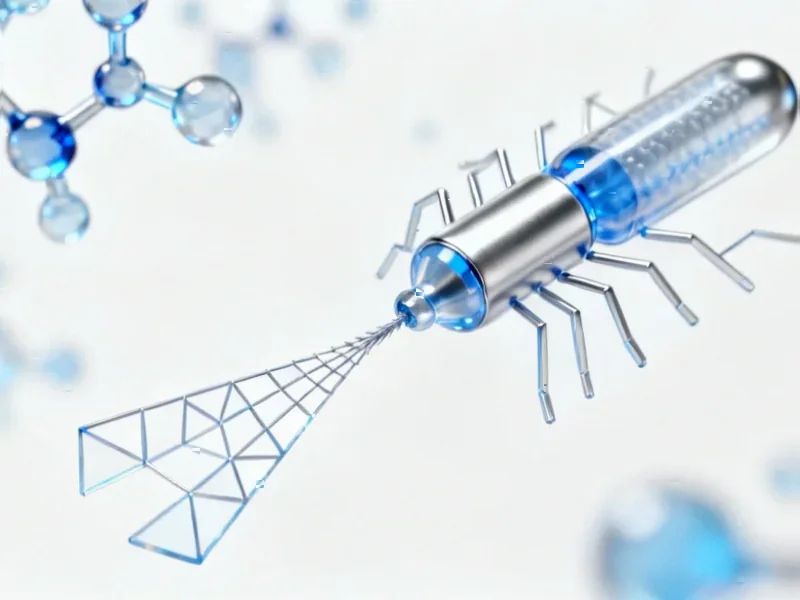According to Phys.org, scientists at UC San Diego’s Scripps Institution of Oceanography have developed a revolutionary method to produce xanthommatin, the natural pigment behind octopus and squid camouflage, achieving up to 1,000 times greater yields than traditional approaches. The breakthrough, detailed in a new study published in Nature Biotechnology, involved engineering bacteria using a “growth coupled biosynthesis” technique that links pigment production directly to cellular survival, yielding 1-3 grams per liter compared to the typical 5 milligrams. Led by marine chemist Bradley Moore and former postdoctoral researcher Leah Bushin, now at Stanford University, the team collaborated with UC San Diego’s bioengineering department and Denmark’s Novo Nordisk Foundation Center for Biosustainability to develop this nature-inspired approach. The achievement represents a major step toward making this elusive pigment available for applications ranging from photoelectronic devices and thermal coatings to natural sunscreens and camouflage materials, with confirmed interest from both the U.S. Department of Defense and cosmetics companies. This breakthrough signals a potential paradigm shift in sustainable materials production.
The Supply Chain Revolution
What makes this discovery particularly transformative isn’t just the pigment itself, but the manufacturing methodology. Traditional chemical synthesis and animal harvesting approaches have kept xanthommatin commercially unviable for decades, creating a classic supply bottleneck that prevented market development. By achieving 1,000-fold production increases through bacterial fermentation, the UC San Diego team has effectively created a scalable manufacturing platform that could disrupt multiple industries simultaneously. The cosmetics industry, which has been aggressively pursuing natural alternatives to synthetic dyes and UV blockers, now has a viable pathway to incorporate this bio-inspired pigment into commercial products. More significantly, the military’s longstanding interest in adaptive camouflage materials suddenly becomes technologically feasible at industrial scales.
Beyond Camouflage: The Green Chemistry Angle
The broader implication lies in the methodology itself. As industries face increasing pressure to transition away from petroleum-based materials, biotechnology approaches like this represent a crucial bridge to sustainable manufacturing. The “growth coupled biosynthesis” technique developed by Moore’s team essentially creates self-sustaining production systems where waste is minimized and efficiency is maximized. This aligns perfectly with the growing bio-economy movement that seeks to replace energy-intensive chemical processes with biological alternatives. For investors and industry watchers, the real story isn’t just about one pigment—it’s about validating a production platform that could be applied to hundreds of other valuable compounds currently trapped in laboratory-scale production limbo.
Winners and Losers in the Materials Race
This breakthrough creates clear competitive dynamics across multiple sectors. Traditional synthetic dye manufacturers and chemical companies specializing in UV-absorbing compounds now face potential disruption from bio-based alternatives that offer superior environmental credentials. The cosmetics industry, particularly the natural and clean beauty segments, gains a powerful new ingredient that combines color, functionality, and sustainability storytelling. Defense contractors specializing in camouflage and sensor technologies acquire access to materials previously confined to nature. Perhaps most importantly, biotechnology companies specializing in fermentation and synthetic biology now have a proven template for tackling other challenging natural compounds, potentially opening up entire new categories of bio-manufactured materials.
The Path to Market Realities
While the laboratory success is impressive, commercial scaling presents its own challenges. Moving from liter-scale fermentation to industrial production requires addressing cost efficiency, purification methods, and regulatory approvals. The cosmetics industry will need to conduct extensive safety testing, while defense applications face different certification hurdles. However, the involvement of established research institutions and the publication in a prestigious journal like Nature Biotechnology suggests this isn’t merely an academic exercise. The confirmed interest from both military and commercial entities indicates that market pull already exists, reducing the typical commercialization risk. What remains to be seen is whether the production methodology can maintain its efficiency advantages at commercial scales and whether competing approaches emerge as the technology matures.
A New Era of Bio-Inspired Materials
This breakthrough represents more than just a single product innovation—it signals a fundamental shift in how we approach materials design and manufacturing. As Bradley Moore noted, we’re entering an era where biology enables sustainable production of valuable compounds through advanced automation and computational design. The successful application of high-throughput robotic evolution and custom bioinformatics tools demonstrates that we’re moving beyond trial-and-error biology toward precision bio-engineering. For industries ranging from textiles to electronics to construction, this opens the possibility of designing materials with specific properties inspired by nature’s most sophisticated systems. The octopus’s camouflage ability, once merely a marvel of nature, may soon become the foundation for the next generation of smart, sustainable materials that benefit both people and the planet.




